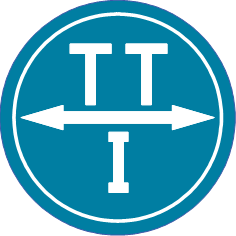 Introduction
Introduction

Website and content created by TTI Marine Renewables Ltd
|
|
TECHNOLOGYQUALIFICATIONTOOL |
This interactive mooring and anchoring (M&A) Technology Qualification Tool website has been developed by TTI Marine Renewables Ltd (TTI-MR Ltd) and the Offshore Renewable Energy Catapult (ORE Catapult) as part of the PR28 Floating Offshore Wind Mooring and Anchoring Systems - Technology Development and Qualification Programme. Its purpose, in conjunction with the Technology Qualification (TQ) Framework Guidance Notes, is to assist stakeholders, including M&A technology developers, to navigate the TQ landscape.
Several approaches have been trialled or are being considered for the station-keeping of floating offshore wind turbines (FOWTs), ranging from conventional equipment to novel technologies. Whilst the former may have a significant track record of use in the offshore and maritime sectors, the operating environments and performance nuances of FOWTs represent a new application area.
The novelty of the application may mean that the development of new technologies is preferable to adapting conventional approaches. In both cases, a FOWT service history does not currently exist and hence the reliability of components and sub-systems must be demonstrated to an acceptable confidence level.
TQ is a systematic verification process that enables developers to gather evidence that a technology is 'fit for service', i.e., it will perform as required when subjected to a particular application in terms of availability, reliability and safety. Novel technologies may not be covered by existing industry standards and codes, necessitating specific TQ approaches.
Widely used in the maritime, automotive, aerospace, pharmaceuticals and nuclear sectors, TQ is part of the product development lifecycle, from concept to field-qualified prototype. TQ can be applied at each of these stages, either in isolation or iteratively. Within a TQ programme, milestones are used to check progress (i.e., has evidence been obtained) as part of the qualification process. Often these are stage gates, wherein failure to achieve a particular milestone will require remedial measures to be enacted in order to proceed to later qualification and/or development stages.
The qualification activities may reveal design shortcomings, or residual risks and hence opportunities for design modifications to be made in order to improve the overall performance, reliability or safety of the technology. Significant design changes made to a particular element may have an impact on the performance of interfacing components and/or subsystems, possibly even necessitating requalification of these associated systems. Successful completion of a TQ programme milestone allows the design development to move to the next stage.
 Introduction
Introduction

Website and content created by TTI Marine Renewables Ltd